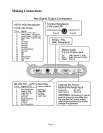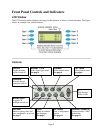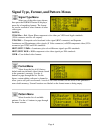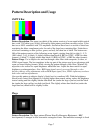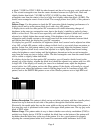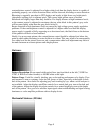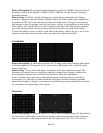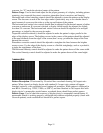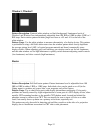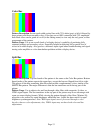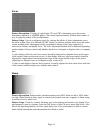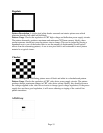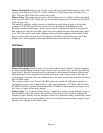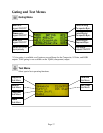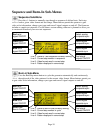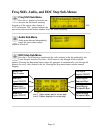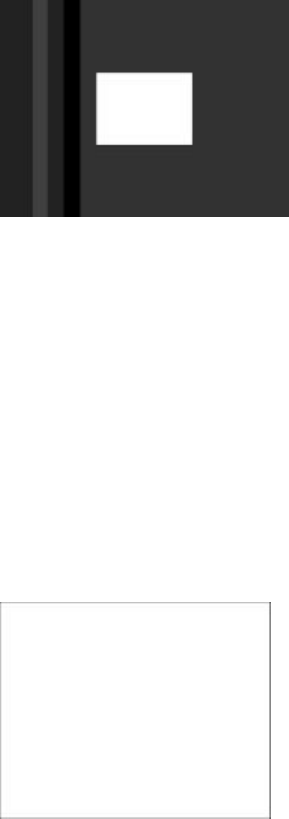
Page 12
Window1, Window2
Pattern Description: Centered white window on black background. Luminance levels of
Window1 and Window2 are independently adjustable from 100 IRE to 0 IRE in either 5 IRE or 1
IRE steps. Each window pattern includes pluge level bars at +4% and –4% to the left of the
white window.
Pattern Usage: Use the white window to measure chromaticity of a display device. This pattern
is preferable to using a full field white raster since the window pattern more closely duplicates
the average picture level (APL) of typical program material and doesn’t unnaturally stress
display circuits. When adjusting gray-scale tracking, one window can be set for low luminance
and the other window set for high luminance to quickly switch between adjusting cutoff controls
(low luminance) and drive controls (high luminance).
Raster
Pattern Description: Full field raster pattern. Pattern luminance level is adjustable from 100
IRE to 0 IRE in either 5 IRE or 1 IRE steps. Individual colors can be gated on or off (in the
Gating menu) to produce red, green, blue, cyan, magenta, and yellow rasters.
Pattern Usage: Use to check color purity and display chrominance uniformity. Color purity
problems are usually caused by slight magnetization of some part of a CRT display device, often
metallic CRT mounting brackets or the metallic CRT shadow mask, located just behind the
phosphor screen in a direct-view CRT. This can usually be seen as areas of color on a white
raster, but usually shows up better on a primary-color raster, especially red.
This pattern may also be useful in detecting red and blue overdrive at the sides of a projection
display, due to insufficient correction for CRT side-to-side placement.



